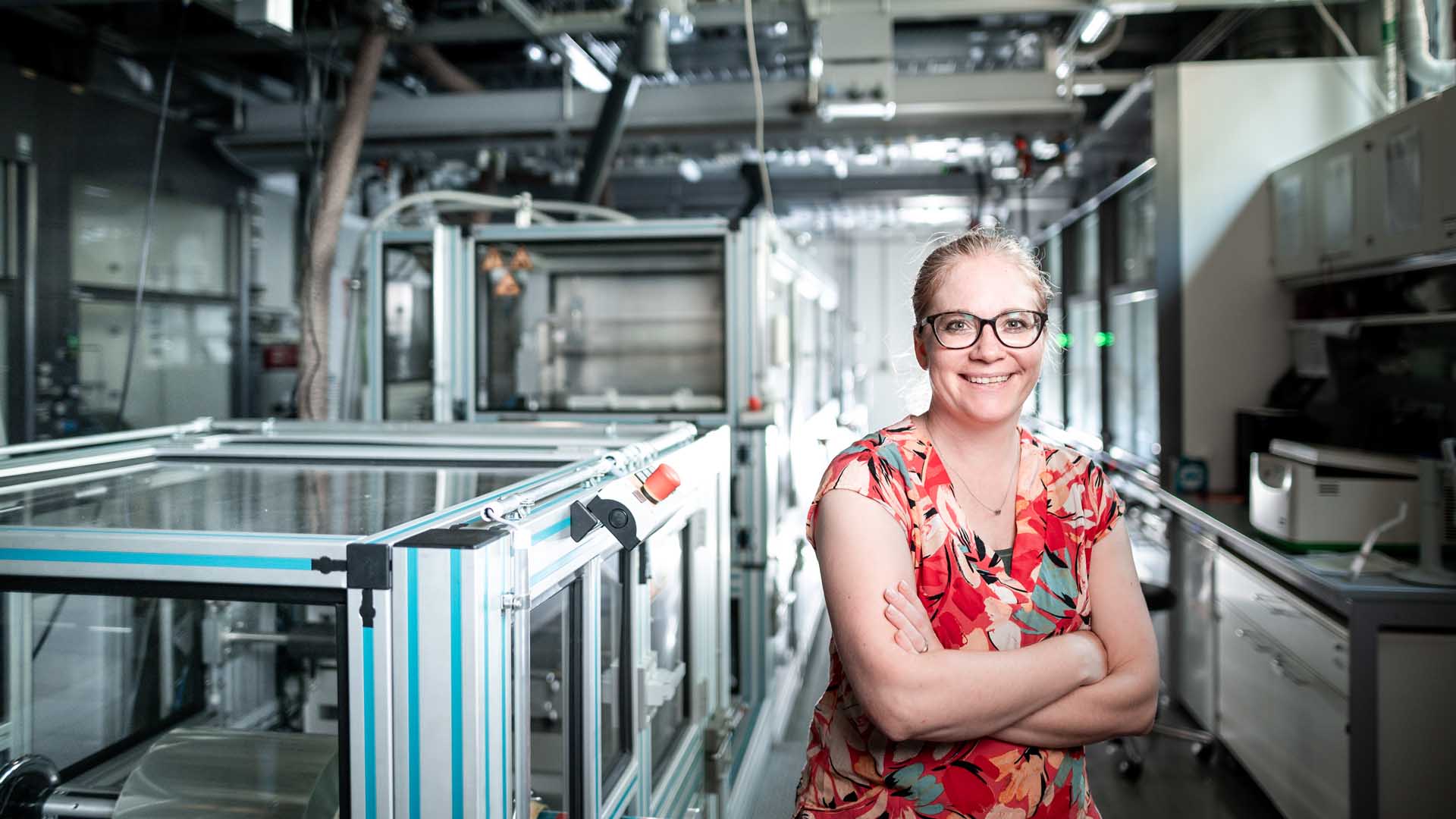
Advancing key technology
Doris Segets researches materials for renewable energies
- von Juliana Fischer
- 14.09.2023
Tiny nanoparticles promise one thing above all: to enable the decarbonization of the energy sector. To speed up the development of the particles, UDE professor Dr. Doris Segets wants to use artificial intelligence. In an interview, the researcher explains how she wants to make the nanomaterials, which work perfectly in the laboratory environment, usable for industry - for example, for the scaling up of hydrogen.
Professor Segets, you are a chemical engineer and thus an expert in a discipline that is considered a key technology for the energy transition. Can you describe your field of research?
I work with nanoparticles. Meaning, I focus on the production and processing of materials. Processing not only means building the particles according to their necessary properties, but also developing them further. We turn particles into supraparticles and ultimately into structured layers, such as electrodes. These are needed for hydrogen electrolysis, for instance. So far, the catalysts in electrodes that get hydrogen production started are made of precious metals. These are expensive and difficult to obtain. That is why we are developing precious metal-free catalysts at the UDE and in close cooperation with the Ruhr University Bochum (RUB). Incidentally, there is a similar resource problem with wind energy, because permanent magnets based on rare earths are installed in the rotors. For this, too, we need cheap and easily available new materials.
What is so special about materials science at UDE and RUB?
What drives me is the question of how we can bring what works in the laboratory on a very small scale to the large scale, i.e. make it ready for industry. In light of the small time window that climate change still leaves us for the energy transition, it is incredibly important that we make rapid progress here. And we have the right team for that.
Have you already found answers to this question?
Yes, our partners from RUB have found an evidence-based solution that we believe has great potential to replace precious metals and rare earths. Our idea are compositionally complex materials. They are characterised by almost infinite combination possibilities. We construct the nanomaterial not from one or two elements, but from a great many. This mixing allows us to create completely new properties. But: if we want to combine five elements in one material, we quickly get over 2 million possible combinations, i.e. the parameter space explodes. And we need new ways to accomplish the task.
And how do you identify the material with the right properties in this infinite range?
Without a good approach, it would be quite impossible. But with the right methodology, we can quickly make the parameter smaller really quick. We want to use artificial intelligence (AI) for this. We feed the AI with system data, i.e. data along material synthesis, processing and system integration.
What kind of data is exemplary for this?
For example, data that describe “faulty”, or better unexpected properties that you don't want to have in the material from the outset. An example would be a catalyst that dissolves under reaction conditions, i.e. at 80 degrees Celsius and a pH value of 2. This could be ruled out in the future by looking at the solubility.
So learning from mistakes is key?
Yes, absolutely! Science often focuses on what works. But we also need to understand why some things don’t work and translate the reasons into physical parameters. I believe that through the combination of artificial intelligence, novel materials based on the targeted mixing of elements and the understanding of how these materials behave in a system, we can create the breakthrough in material development for the energy transition.
More Information
Prof. Dr Doris Segets, Chair for Particle Science and Technology, Phone: +49-(0)203-379 8230, doris.segets@uni-due.de
Materials Science at UDE's CenterforNanoIntegration (CENIDE)
